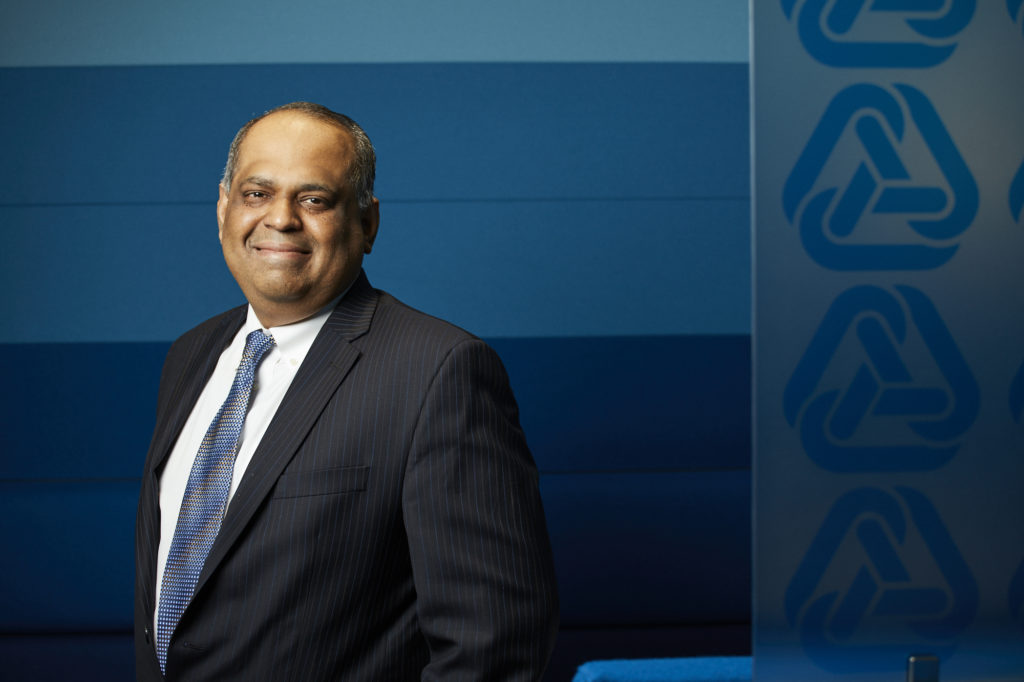Longtime tech executive John Machado remembers the days of creating a software solution that involved a beginning, a middle and an end. Once the value of the new solution was clear, an agile development process ensued and then ended with a completed product. “It was a relatively dependable cycle,” said Machado, Chief Technology Officer at UKG, a leading HR and workforce management software solutions provider.
In the present era of mass-scale digital transformation, this cycle makes little sense. Although the term digital transformation implies an end state—a caterpillar transforming into a butterfly—software design and development persists. “We’ve reached this tipping point where technology is no longer a once-and-done effort,” said Machado.

The reason is two-fold: human ingenuity is relentless, culminating in continuous technological disruptions. Rather than a one-off digital transformation, IT is in a perpetual state of “digital adaptation,” Machado said.
Other IT leaders have come to a similar realization—their work is never done. “It’s a ceaseless journey,” said Luigi Sanna, Director of IT at Harman, a global leader in connected automotive technology and audio innovations. “There’s always something new in front of us.”
Technology research and development never stops; it just spins ad infinitum, with brief pauses to celebrate a job well done until the next task emerges. Once a company digitally transforms, it needs to digitally transform again.
“Today’s cutting-edge tool is good for only a limited period of time,” said Aleksander Tomic, Boston College Associate Dean of Strategy, Innovation and Technology and Director of the Applied Economics program. “The question is, how long will the tool last before it becomes antiquated?”

The answer: not long. Disruption is inevitable. “Technology is an enabler for the business, but no sooner than you start something and get it done, there’s another new tool in the toolbox or a competitor introduces a much better tool,” said Ketan Pandit, CIO at the large global insurer QBE North America. “Human innovation is like space—there’s no end to it. The problem is we live in a practical world where funding is not unlimited.”
Unpacking Priorities and Spend
Without access to an open faucet of funds, CIOs must carefully consider where best to invest their budgets. Fortunately, the days of multi-million-dollar expenditures on giant tech projects like an ERP system are over. Still, to Machado’s point, IT needs to be in a perpetual state of digital adaptation—operationally prepared to solve customer problems and needs sooner rather than later.
Pandit agreed. “IT is a continuum today, when ten years ago everything was manual processing and there was no automation,” he said. “Both business leaders and IT leaders can’t help but be attracted to the next shiny object—blockchain, IoT, AI, machine learning, NLP (natural language processing) and bots for automating this or that. You can spend tens of millions of dollars today to invest in all these innovative tools in one fell swoop. But what about five years from now when their competitive edge has dulled? There goes the IT budget; you’ve broken the bank.”
Like other leading insurance and reinsurance companies, QBE North America uses all these cutting-edge tools, principally for claims management, underwriting and customer-facing interactions. The tools provide enhanced customer experiences and make work more efficient, productive and cost-effective. But Pandit is careful how he spends his budget, pursuing a “building blocks” approach, he said, in which each block is less expensive than capitalizing the entire building—a few million dollars versus tens of millions of dollars. “A monolithic system lasts only so long, since technology changes faster than the seasons of the year,” said Pandit.
To discern these blocks and their related spend priorities, Pandit instituted an agile development process involving “persistent squads” of people from different business lines. Depending on the problem to be solved, a squad is formed with a combination of people drawn from, say, finance, claims management and IT. To solve a different need, another squad might involve underwriting, marketing and IT.
The various squads combine into a “tribe” that reports to Pandit, who determines the priorities and related spend. “Before we move forward, I like to run the ideas by our agents and brokers to get their feedback,” he said. “Once we earmark the capital, the process continues. It’s a journey.”
Problem-Solving First, Engineering Next
That’s a huge departure for an IT function that for years was an order taker delivering a product. At HGS, a global leader in digital customer experiences with $754 million in annual revenues, Chief Digital Officer Virgil Wong described how companies traditionally constrain IT departments to simply fix broken services instead of leveraging them as strategic partners.
“Project-by-project band-aids treat symptoms, not the underlying causes of poor customer experiences,” said Wong. “Teams led by CIOs, CMOs and CXOs must collaborate closely to create a cycle of innovating, optimizing and growing the business to fulfill rising customer expectations.”
He emphasized the need for IT to think about problem-solving for evolving systems, as opposed to a focus on engineering systems. “Engineering systems allow for widely applicable solutions, whereas evolving solutions are personalized, ongoing and more of a framework for change,” he said. “The risk in not thinking about evolving systems is ending up with a limited product or service that solves one problem but not ten others likely to emerge.”
To mitigate this risk and ensure a more iterative approach to innovation, HGS schedules strategic workshop sessions that bring together marketing, IT and other stakeholders with an external consultant. The consultant helps ensure that the plans for continuous transformation are evaluated objectively against best practices, analyst research and industry trends—”without the typical cross-function politics,” he said.
The goal is to create a big picture of possibilities, followed by a roadmap and a set of guiding principles to seize opportunities. “It’s a process that starts with a mental model for change, usually a visualization of the optimal experience you want for your customers at every stage of their journeys,” Wong said. “To maximize the value of your customers, you have to meet their constantly increasing expectations. Every time customers taste a better standard, like Amazon Prime’s one-day or same-day delivery, they want it from every business.”
He provided an example of a consultant-led workshop where IT and marketing discuss the new product launch of a key competitor. The session would begin with an analysis of how the competitor might threaten the company’s market share, e.g., once the competitor gets a foothold in one market, it can make incursions into other markets. The IT and marketing teams work with the consultant to improvise ways to “disrupt the disruptor,” rapidly adapting its product and service portfolio as immediate countermeasures.
This approach obviates the usual finger-pointing. “You don’t want marketing to seize on an isolated piece of data to say that IT isn’t doing its job, or IT to blame marketing for not knowing what the competition was doing,” he explained. “Rather, you get everyone aligned with a shared battle plan for rapid deployment, and more importantly, continuous assessment, iteration and optimization.”
Customers Pave the Way
Other IT leaders see the same linkage between a depth of customer knowledge and the technology development process. At public company BlackLine, evolving perceptions of its customers’ problems and needs formulated across the enterprise drive a substantial portion of product development and technology.
“We’re fortunate in having a close-knit executive team that listens to each other well,” said Pete Hirsch, CTO at BlackLine, a provider of finance and accounting automation solutions, with 3,600 customers worldwide, including half the Fortune 100. “Our marketing team, for example, is pretty leading edge. They understand our customer behaviors in a very serious way. We listen to what they tell us and support them back by developing the technology that solves these problems.”
Recently, the company launched a data and analytics project to better understand how customers use its products. Customer data from its Software-as-a-Service systems is stored along with data from its internal corporate systems and third-party systems like Salesforce and Marketo in an enterprise data warehouse in Google Cloud.

“We’re using Tableau (a visual analytics platform) to explore and understand the collected data, and BigQuery (Google’s serverless cloud storage platform for large data sets) to perform big data analytics—analyzing customer usage patterns to discern if they’re getting the full value of our products,” Hirsch said.
The analytics has guided a recent product enhancement to the company’s AI-powered, cloud-based cash application product, released earlier this year. The application automates the accounts receivable process, reducing the time it takes to apply cash to an open invoice. “We’re augmenting this solution with a collection and risk management feature that looks at the aging of the invoice—the length of time it’s outstanding,” said Hirsch. “For us, digital transformation is continual transformation, driven by customer needs.”
At UKG, Machado has a similar perspective. He provided the example of the company’s new Life-Work Technology vision—a set of new software products adapting to more flexible work arrangements across physical and virtual workspaces. “We’re designing solutions that help people work in ways that support their lives, empowering them to thrive at work as well as in life,” said Machado. “That’s a huge difference from HR software that’s entirely transactional in nature. We’ve even got a new brand tag line—Our Purpose is People.”
He gives credit for the new solutions approach to Cecile Alper-Leroux, UKG Group Vice President, Research and Innovation. “Cecile is an economic anthropologist who said we were missing a critical opportunity in designing and developing our products; we needed to start with an understanding that a person’s life and work are intertwined,” Machado said. “Our solutions needed to support and guide our customers’ people in their personal life and work journey. It made so much sense.”
At Harman, many new products and features also are generated by an acute understanding of customers. “We need to keep pace with where our customers are headed,” said Sanna. In 2015, the IT organization was well behind this pace. “We were in an analog world, producing car radios and loudspeakers,” he said. “Our data was buried in on-prem servers. We had zero visibility. Then, the Internet of Things emerged.”
The IoT pointed to a future in which drivers had real-time access to all sorts of information, via a wireless local area networking allowing the vehicle to share Internet access and data with other devices like the person’s smartphone. “Everything in the car would be connected to voice-activated systems, turning it into a wireless communications channel on wheels,” he said.
To seize this opportunity, Harman created Digital Transformation Solutions (DTS), a business unit serving as an internal IT service provider. DTS collects and analyzes Harman’s internal data and is in the thick of building a virtual pipeline to collect and analyze external data, as well. Once completed, the combination of both data sets will assist automakers’ connectivity plans for self-driving vehicles. “We need to get in front of where our customers are going—adapting our products to their evolving needs,” said Sanna.
Machado concurred. “We’re never going to be one step ahead on the technology; there’s always some new disruption coming in,” he said. “An agile, adaptive model is the way forward. It starts with listening to and serving people. We receive input on customer needs, create the solutions that address these needs and obtain feedback on what we got right and wrong.”
“Nothing is perfect,” he added. “If something fails, we adapt.”









